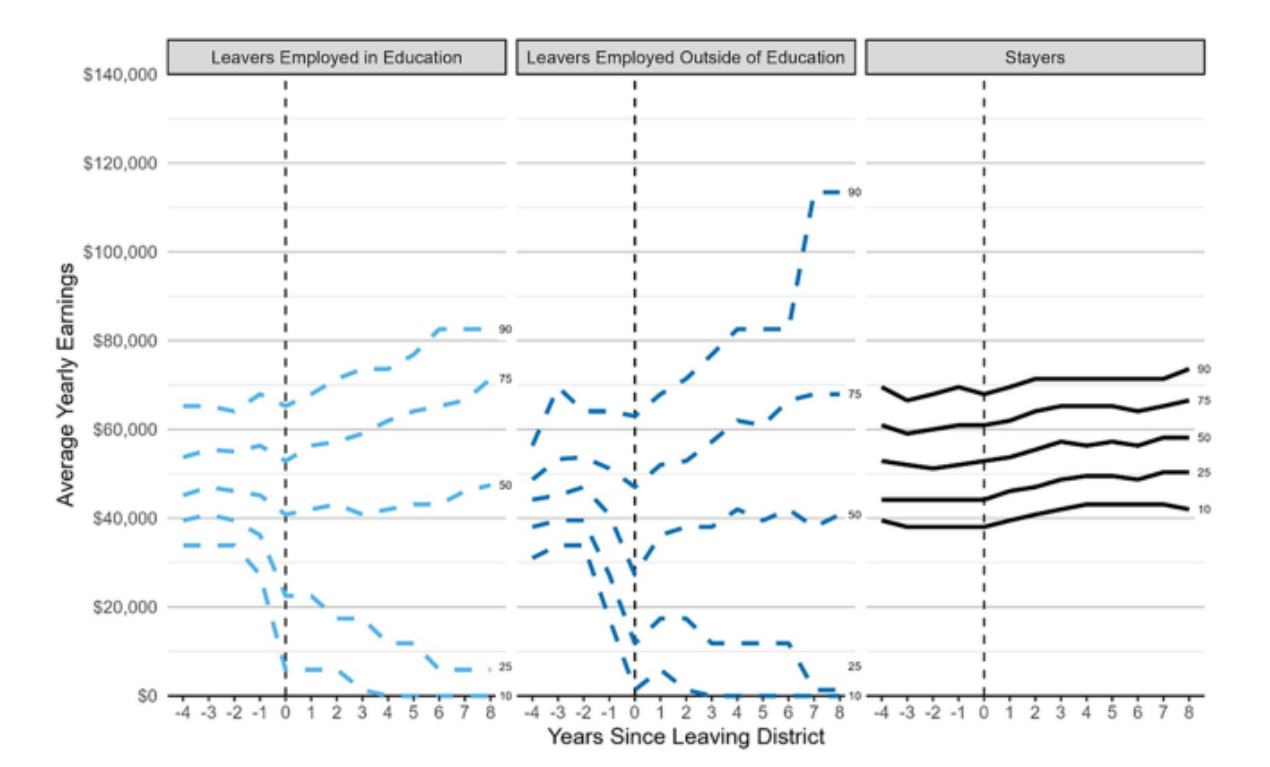Often accompanying these conversations is a narrative that teachers are "lured" out of the profession into more lucrative fields. A new study of pre-pandemic data by Quentin Brummet of the University of Chicago, Emily K. Penner of UC Irvine, and Nikolas Pharris-Ciurej and Sonya R. Porter of the U.S. Census Bureau paints a more complex picture of who leaves the classroom and how much they earn afterward.
In fact, the researchers found that most teachers who left the classroom actually remained in education, and for those who left education, the "monetary grass" wasn't much greener on the other side—if it was even green at all.
To track the career and earnings outcomes of teachers who left one large urban school district from 2003 to 2014, the researchers linked records from the district to employees' tax records to identify where former teachers went and how much money they made for up to eight years after leaving. The study focused on the pseudonymously named Coastline Unified School District (CUSD), one of the largest 20 districts in its state, and one in a competitive labor market with above-average teacher turnover rates.
Most who left the district stayed close to the classroom: 46% entered another K–12 school district, and smaller proportions entered higher education (5%) or another education field (7%). While teachers who pursued employment outside of education had the potential to make a lot of money, most of them didn't. In fact, at least half of the teachers who found employment outside of education earned less than the bottom quartile of teachers who continued teaching in CUSD. However, it's worth noting that the top quartile of employed leavers earned more after exiting CUSD than the top quartile of CUSD teachers.
How much did teachers make when they left CUSD for another position?

Note: This graph uses percentiles to show the variability in earnings of teachers who left CUSD for another position in education, teachers who left CUSD for a non-teaching position, and teachers who remained in CUSD. For example, the top light-blue dotted line shows the earnings of the 90th percentile of teachers who left CUSD but stayed in education; the top dotted dark-blue dotted line shows the earnings of the top 90th percentile of CUSD teachers who left education entirely, and the top solid black line shows the earnings of the top 90th percentile of CUSD teachers who stayed.
Adapted from: Brummet, Q., Penner, E. K., Pharris-Ciurej, N., & Porter, S. R. (2017). After school: An examination of the career paths and earnings of former teachers. Educational Evaluation and Policy Analysis, 01623737241227906.
These findings present a few considerations for districts that want to retain teachers. Given how many teachers left the profession for reasons other than making a higher income, districts would be wise to complement any financial changes or incentives with efforts that target teachers' job satisfaction. In a recent survey, many teachers reported that they want more time to collaborate with their colleagues and more time to coach and support other teachers. Strategic staffing models could provide these collaborative and coaching opportunities as well as leadership opportunities that might entice them to stay in the classroom longer.
